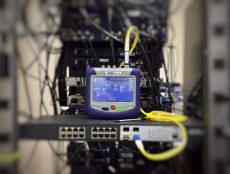
Employees feel more engaged when learning if the content is delivered in the form of short and crisp lessons.
What Is Microlearning? Microlearning is the most flexible and effective form of learning and training. This form of training can be used in different ways to improve the performance of an individual and the organization. Microlearning consists of short training modules, each module addressing one topic at a time.
Many organizations believe that the concept of microlearning will increase in the future and will also be accepted by many more businesses, as it helps the learning developers reduce the development cost and increase the course development speed.
Microlearning provides the information, right when and where the employees need it the most. It is quick and easily accessible.
With this, the employees don’t have to be seated for extensive and dull training programs. This is best for employees who prefer learning and training on the go, as it helps them add essential skills and knowledge without sacrificing time, which can be used to complete other important tasks. Microlearning involves short and targeted information that is easy to understand for today’s busy workforce.
Benefits of Microlearning
Microlearning is Quick. A lot of employees do not engage in workplace training and learning as they do not have time to attend the long training sessions. This is where microlearning comes into the picture; it is quick and easy, at the most needs ten minutes to go through a module. The employees can perform their daily tasks as expected because they will have to spend less time on training. With microlearning, employees won’t have to take out extra time to learn those extra skills for their jobs. As a result, the employees will have to invest very less time to earn those additional benefits.
Higher Knowledge Retention Rate
A traditional form of learning is time-consuming as well as costly for businesses. The learners do not have time to sit in the long training sessions. This is where microlearning can help, as it works as separate training or supplement training, which extends the lifespan of information in the learner’s brain.
The microlearning courses are easily accessible on-demand. The training modules are short and the modules designed are actionable, this helps in improving the retention of knowledge and information. The information obtained can stick for long with microlearning, as opposed to classroom-based training. Our brains are not wired to maintain focus for long periods. This type of learning is useful when you are learning about difficult topics.
Enhances Engagement and Employee Satisfaction
Training and improvement programs are successful only when the engagement rate is higher. Effectiveness and output decrease when the engagement rate of a training program is low and learners do not feel motivated to consume any training material later.
With the help of microlearning, you can boost employee engagement. The content that is created for microlearning is targeted and deployed timely; this decreases the chances of employees getting distracted and bored.
By providing courses, you can make your workforce feel valued. Microlearning does not only make learning and training easy but also makes it enjoyable for the employees. As the learners feel confident by gaining additional skills that they can use to perform their job responsibilities more efficiently, they become more satisfied and feel happy.
Promotes Learning Culture
Microlearning promotes a learning culture, as the training content can be configured into many microlearning assets. This process enables the learners to pick a topic they wish to learn and that too in their preferred format.
The learners have the flexibility of learning on any device of their choice, such as – mobile phones, tablets, laptops, desktops, etc.
Since microlearning addresses a single learning objective, this gives learners the advantage of taking up the course in just a few minutes. This helps the learners save time and increases their inclination to take up the course.
Lesser Content Creation Time
With Microlearning, the learning procedure becomes easy for content creators and learners both. Developing detailed learning course content for the employees takes a lot of time.
However, with microlearning, you can split the course creation into minor projects that target precise subjects. This process makes content development much quicker and simpler. There is a significant reduction in course creation costs too.
Microlearning is NOT
- Just chopped up content to create mini-courses
- Just limited video only
- To be used as a replacement for eLearning or just any learning situation
- Same as Nanolearning
- Same as Mobile Learning
- The right fit to teach complex topics
There are different types of microlearning you can choose from. Some of them are mentioned below.
- Videos
- Simulations
- Infographics
- Podcasts
- Gamification
- Social media
- Geofencing
- Branching scenarios, and more
- When to use Microlearning and When not to Use Microlearning
Microlearning increases learners’ engagement, perhaps more than any other form of training. When you need to achieve specific learning objectives and when your employees need quick training to perform certain tasks, Microlearning is your saviour as it provides short, concise, and to the point training in almost no time.
You should never use Microlearning when you wish to master a certain topic, where you need in-depth study, practice, and a lot of time to learn. Moreover, you should never use microlearning when your training program deals with complex content or content that is highly technical.
Wrapping it up
Today’s modern employees have a limited attention span, for them, microlearning is the best deal. For remote employees who are mostly on-field and away from their desks, and have limited or no time for training, microlearning is the best option for them to get trained quickly.
The organizations know that with microlearning, they are creating effective, efficient, and affordable learning solutions. Microlearning, when joined with mLearning (mobile learning) can add a great number of benefits to your organization. Providing short bursts of training allows for increased retention of knowledge.
Featured image:kimshanephotos, iStock.









No Comments